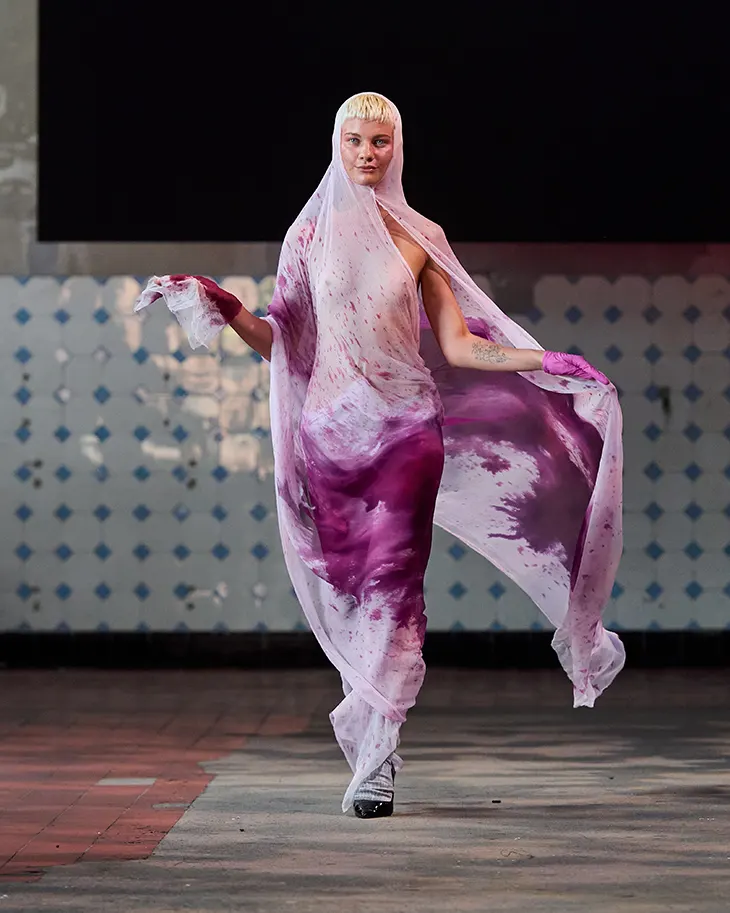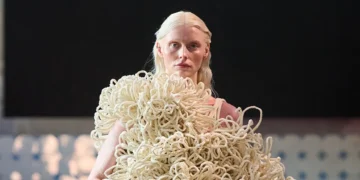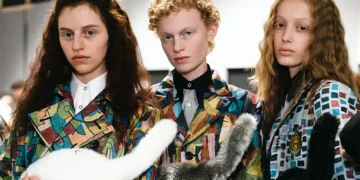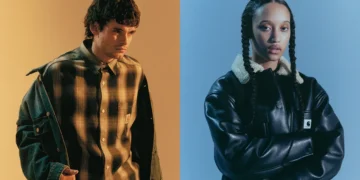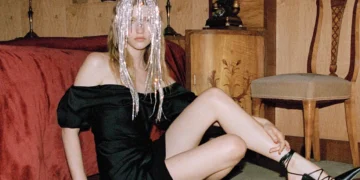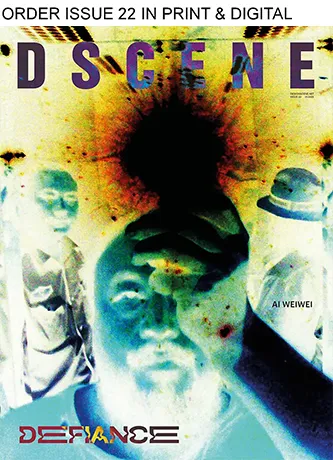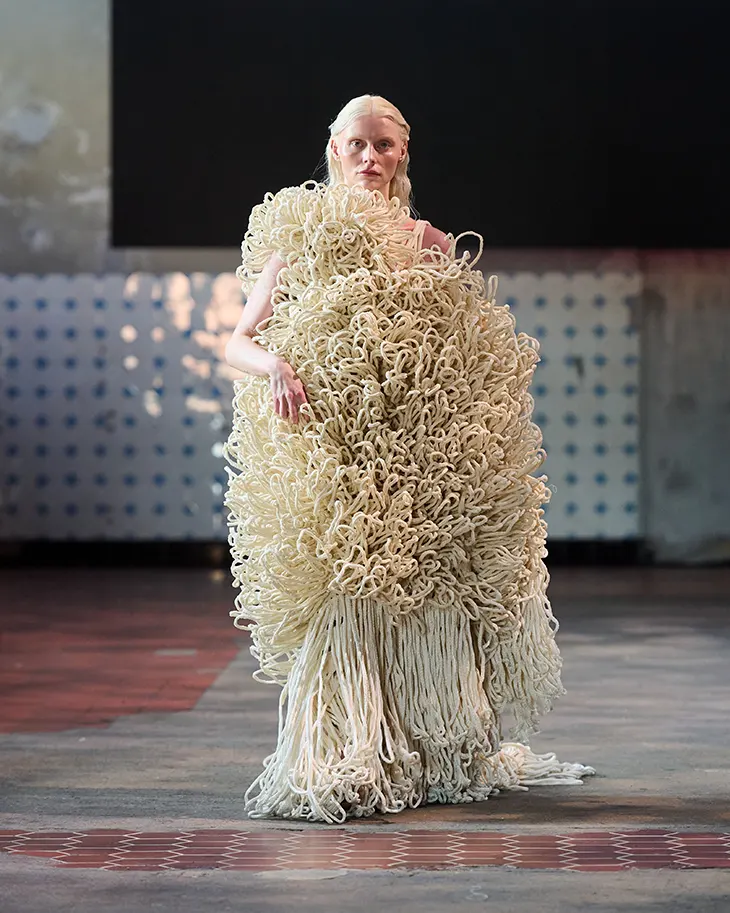
The Swedish School of Textiles returned to Copenhagen Fashion Week with EXIT25, its SS26 showcase of graduating designers from both Bachelor and Master programs. The school, based at the University of Borås, presented collections that approached fashion as material research, philosophical inquiry, and personal archive. Each designer introduced a body of work shaped by experimentation, conceptual depth, and technical awareness, breaking from conventional methods of garment construction and instead offering new design languages grounded in speculative practice.
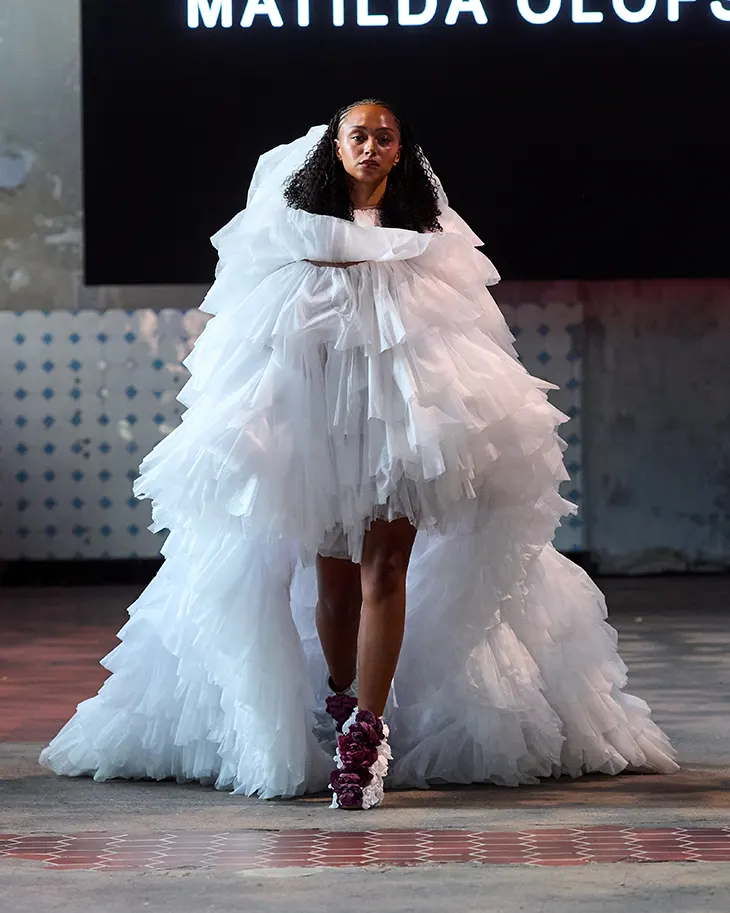
EXIT25 included collections from sixteen designers, each developing distinct systems of thinking through textile. Many of the projects leaned into material transformation and alternative constructions. Anaïs Dahl Perret’s work reconfigured knitwear into modular garments built from laser-cut components, proposing a model for user-controlled assembly. Andrea Rehbein explored abstract volumes through engraved leather, resulting in garments that emerged less from body-centric patternmaking and more from sculptural gestures. Gabriela Arias Egana folded Chilean textile heritage into laser-cut applications, referencing diasporic identity through material memory. Charlie Malmsten looked to the Finnish ferry as a site of camp and excess, creating garments shaped by life aboard a cruise ship and the aesthetics of working-class glamour. Frida Elise Henriksen crafted expressive silhouettes drawn from theatrical archetypes, exploring how character and costume intersect through dressing.
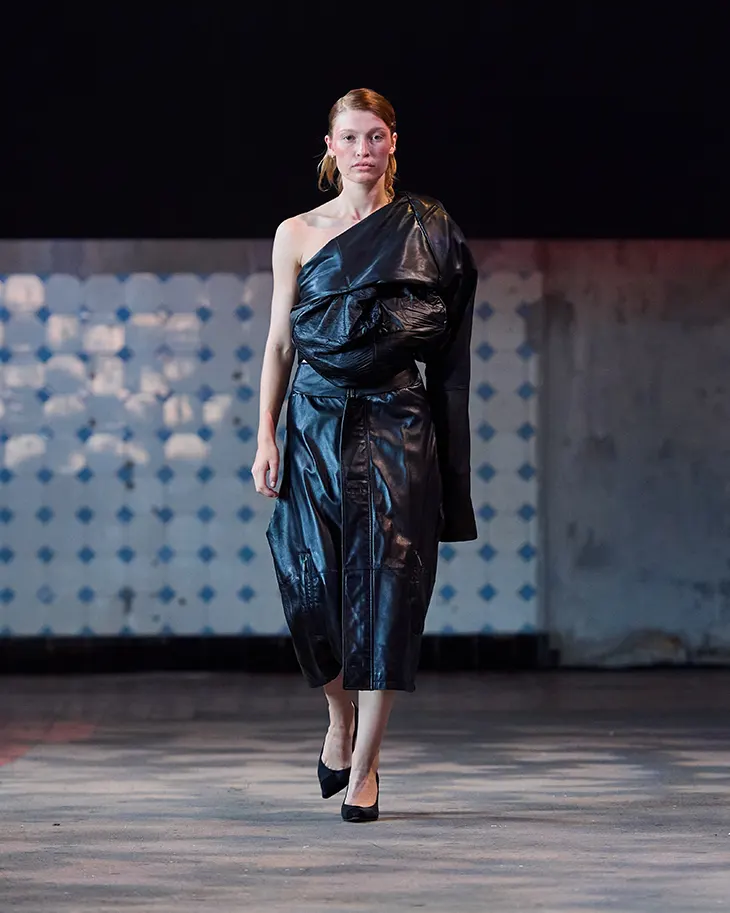
Across the collections, themes of identity, distortion, and redefinition surfaced repeatedly. Jonas Gustavsson used knitting to rethink gender as abstraction, interpreting Charles Fourier’s idea of a third gender into garments that exist between structure and fluidity. Zuzana Vrabelova’s designs imagined clothing as autonomous organisms, using paper yarn and speculative forms to question fashion’s relationship with the body. Josephine Järlhem built her collection from family photographs, translating fragments of personal history into tactile expressions through print and texture. Margot Leverrier explored the tension between brushed felt and lace, placing craft in dialogue with industrial production to reshape traditional textile techniques. Siri Bratt reimagined paisley through digital printing and construction, challenging perceptions of ugliness and cliché in women’s ready-to-wear.
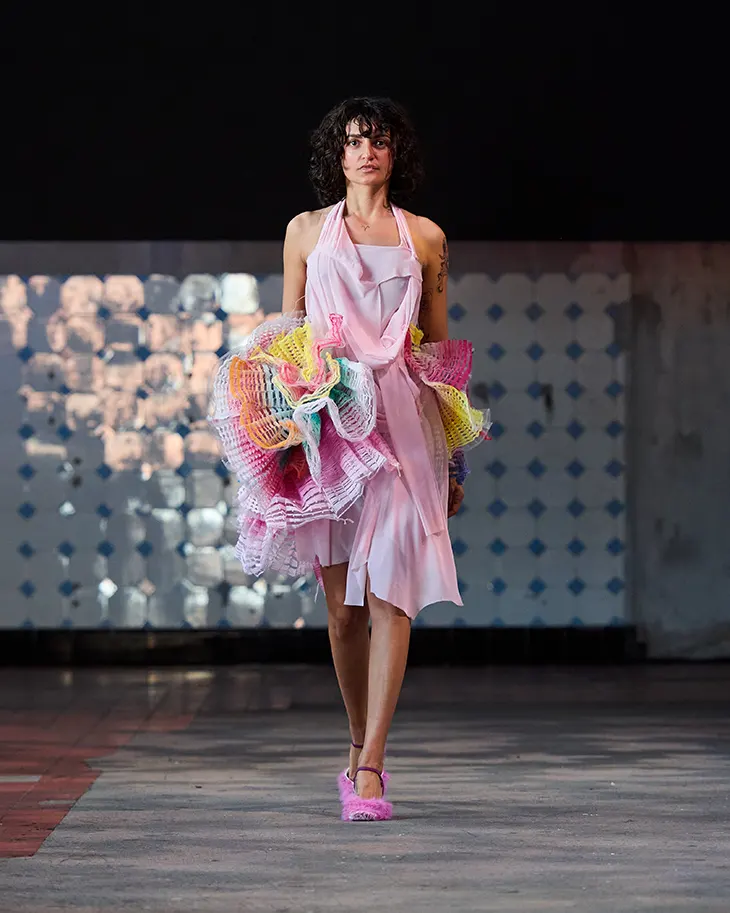
Some designers tested the limits of traditional materials. Lan Krebs challenged the function of single jersey, layering machine-knit tubes into sculptural shapes that had no designated front or back. Susanna Suojanen worked with discarded garments, manipulating jersey, denim, and chiffon into new silhouettes that shed their former identities. For Wictor Ljunggren, hiking gear informed a collection structured around cord systems, using tension and release to modify fit and shape in real time. Matilda Olofsson reinterpreted bridalwear, shifting volume and proportion to rethink white dress conventions through experimental form.
A number of collections embraced research as a form of design in itself. The pieces often began from a process rather than a fixed idea of a finished look. Pawel Robuta’s Liquid Relics used the concept of staining, often seen as a flaw, as a way to explore transformation. Yuting Xia approached fashion like graffiti, letting garments evolve spontaneously without sketches. In both cases, the body served as a surface for mark-making rather than a form to be dressed.
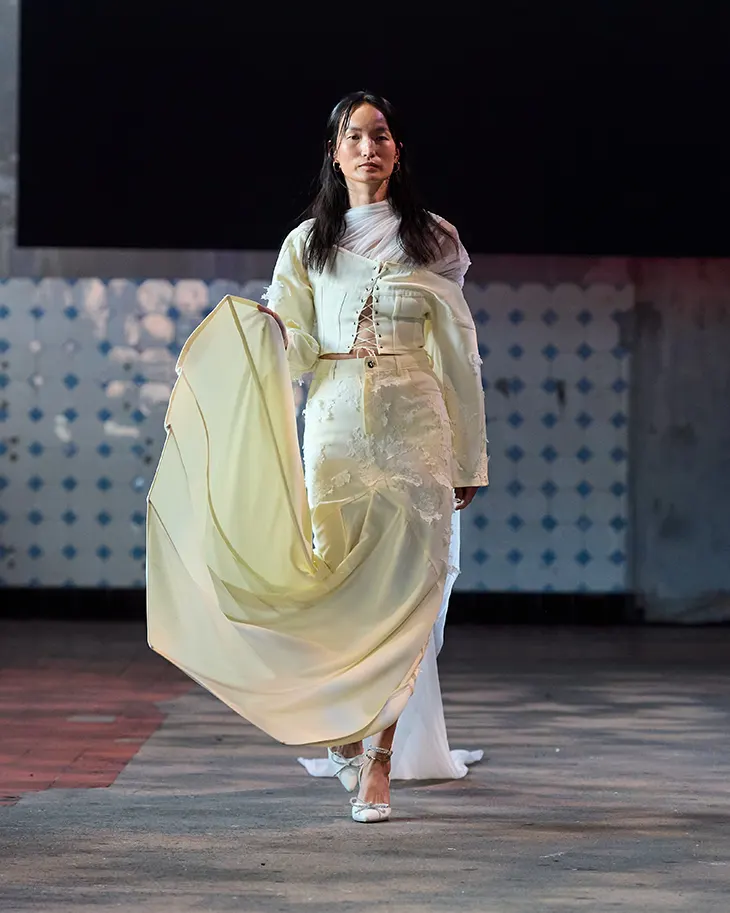
Within this structure, the show presented fashion not as a series of commercial outcomes but as a platform for inquiry. Interviews with students such as Rehbein, Gustavsson, Robuta, and Vrabelova reinforce the idea that EXIT25 offered more than silhouettes and styling. These designers framed their work as philosophical exercises, ways to understand instability, to test material logic, or to explore intimacy through form. Clothes became containers of thought, and process often superseded product.
At its core, EXIT25 examined fashion as method and material. The garments questioned how clothing functions, who it is for, and what it can mean when detached from fixed categories. The Swedish School of Textiles provided the conditions for such speculation through its focus on design-driven research.
